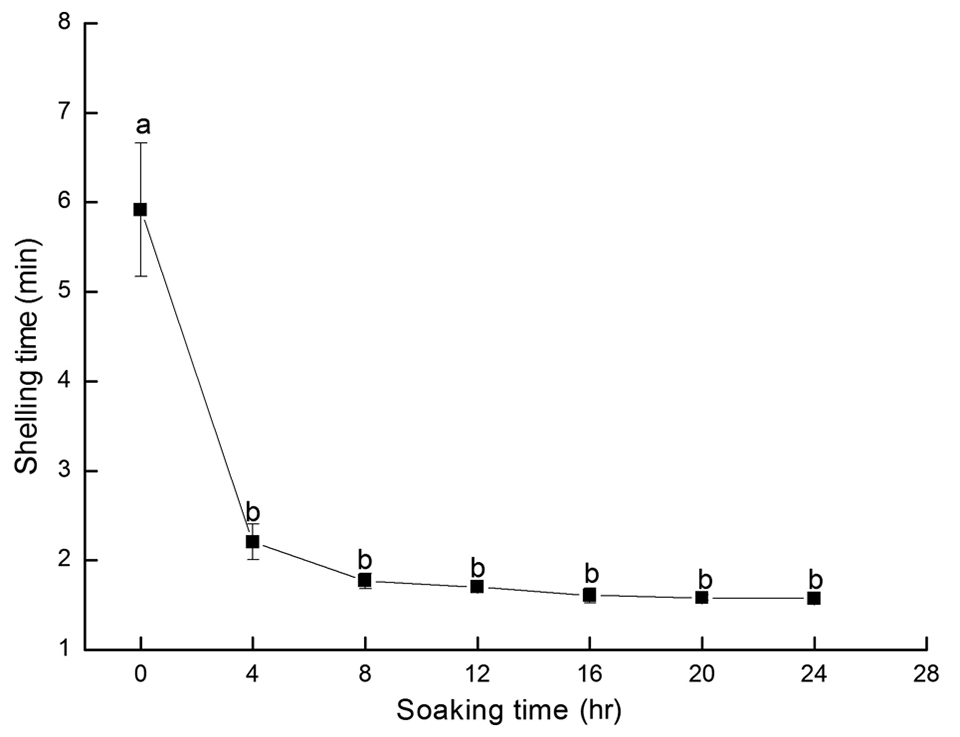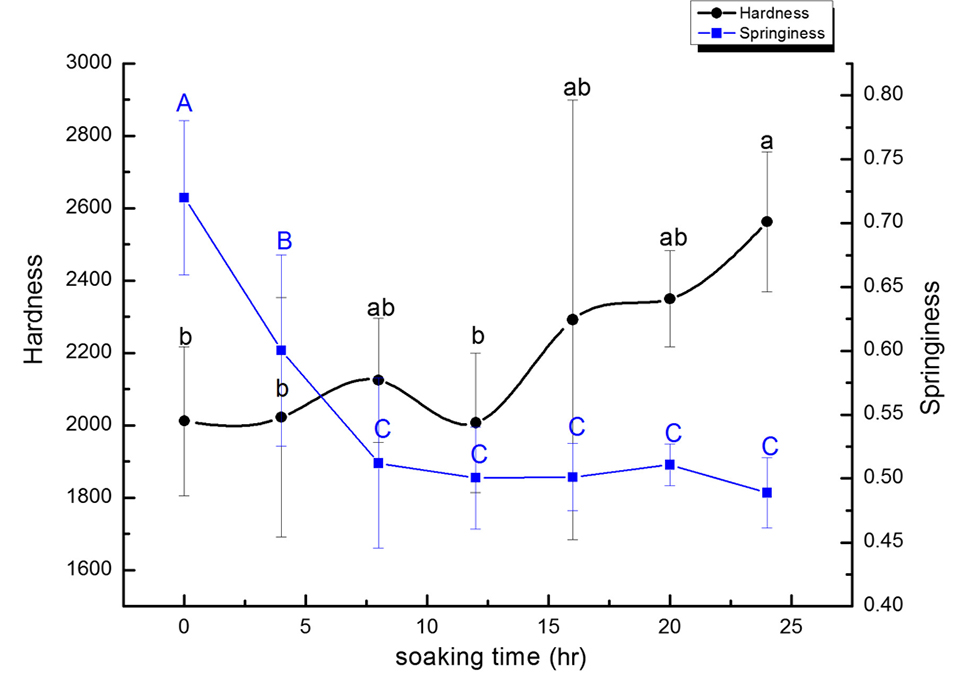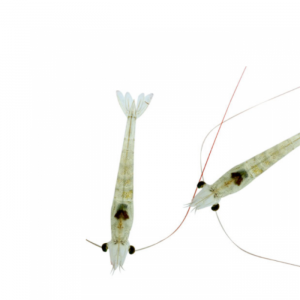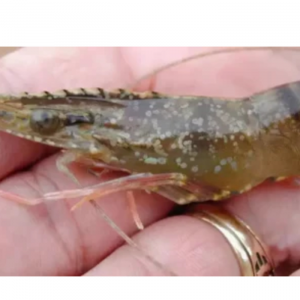
Ice Water Treatment Impacts on Peeling Time, Meat Quality of Pacific White Shrimp
| Wed, 15 Apr 2020 - 15:07
Soaking for eight hours supports optimal shell peeling
This study showed that the optimum shell peeling time for freshly harvested Pacific white shrimp maintained in ice water for up to 24 hours was after 8 hours. Photo by Darryl Jory.
Shell removal, or shelling, is a crucial step during shrimp processing. However, in China shrimp are still shelled manually, even though some mechanical shrimp peelers exist. But these have distinct disadvantages, as the shrimp are delicate and are easily crushed in these machines. Moreover, both the efficiency and the output of processed shrimp are low when utilizing mechanical shrimp peelers. Various alternative methods are available for peeling shrimp, including low-temperature shelling, ice-salt shelling, blanching shelling, high-pressure shelling and flash-freeze shelling.
Currently, placing shrimps on ice and/or in brine (typically NaCl or NaCl with phosphates) solution for several days is the most common practices to facilitate the separation of the edible meat from the shell in the shrimp industry. Various studies have reported that shrimp processed on ice can be peeled more easily than those freshly caught. Other studies reported that pre-treating the shrimp with low-temperature brine and ice salt made shell peeling easier. However, salt can easily penetrate into the shrimp and affect its quality.
Ice water pretreatment (soaking) before shelling involves keeping freshly caught shrimp in ice water overnight, followed by shell removal. The quality of the shrimp and the shelling times are closely related to how long the shrimp are soaked in ice water. Extended soaking time eases the removal of the shrimp shells, but the overall quality of the shrimp is reduced.
This article – adapted and summarized from the original (Xu, N. et. al. 2019. Effect of ice water pretreatment on the quality of Pacific white shrimp, Litopenaeus vannamei. Food Science & Nutrition Volume 7(2): 645-655.) – reports on a study to evaluate the quality changes and shelling issues of Pacific white shrimp (Litopenaeus vannamei) freshly harvested from farms and stored in ice water for up to 24 hours.
This study was funded by the National Science and Technology Support Plan (No. 2015BAD17B01), National Natural Science Foundation of China (No. 31471685), and an extension project (No. 2014‐5) from Shanghai Agriculture Committee.
Study setup
Pacific white shrimp harvested from local ponds were purchased from an aquatic products market in Shanghai, China. The animals were sent to the laboratory (College of Food Science and Technology, Shanghai Ocean University, Shanghai, China) within half an hour, while still alive. At the lab, dead and moribund shrimp were discarded, and the live animals were divided into seven groups, each weighing around 550 grams. The first group was used as a control group, and the shells were peeled and measured. Ice water was added to the remaining six groups.
Shrimp groups were processed by manually shelling every 4 hours for the next 24 hours to determine shelling times and quality changes. Five people with experience in shelling shrimp manually peeled each 550-gram group of shrimp, and the weight of meat and the time required for the shells to be removed were recorded. Meat samples were stored at minus-80 ± 1 degrees-C for various lab analyses.
For detailed information on the experimental design; shrimp collection and preparation; shrimp shelling times; sensory evaluations; ATP‐related compounds and K values; shrimp color and texture measurements; and other tests and data processing, refer to the original publication.
Results and discussion
The time that was required to remove the shrimp shells reflected the degree of difficulty of the shelling process. Thus, a shorter peeling time signified less difficulty in removing the shell from the meat. Our results show that the peeling time per 550-gram group of shrimp declined as the soaking time was extended (Fig. 1). The fresh L. vannamei sample proved challenging to peel and required 5.92 minutes.
After 4 hours of immersion in ice water, the shelling time decreased significantly to 2.21 minutes. The shelling time ultimately dropped to 1.57 minutes after 24 hours of treatment. The results indicated that a decrease in temperature during the processing of L. vannamei reduced the shelling time substantially. However, no significant differences in the shelling time were evident after treatment for 4 hours.

Fig. 1: Changes in the shelling time of L. vannamei shrimp treated with ice water for up to 24 hours.
The shrimp yield reflects the output rate of shrimps after shelling. The control group was represented by 0 hours, and the shrimp yield was 46.87 percent. Meat yield increased considerably with time, reaching 50.53 percent after 20 hours of treatment. However, no significant difference was apparent in the sample group after an 8-hour treatment (Fig. 2). This indicated that the internal tissue cells of the shrimp body absorbed the external moisture during the process of ice water treatment, resulting in an increase in the total weight of the shrimp. The optimal treatment time was determined to be 8 hours and was calculated by combining the shell peeling time and shrimp meat yield.

Fig. 2: Shrimp yield changes for L. vannamei shrimp vs. soaking times in slurry ice.
Regarding comparative sensory quality, our results showed that L. vannamei shrimp kept in slurry ice maintained adequate quality, but texture, smell and color indexes decreased with increasing soaking times. Unpeeled shrimp with a pretreatment time of 0 hours had the best quality, but its shelling was exceptionally difficult and scored the lowest on shelling time. A soaking time of between 4 and 8 hours resulted in easier peeling process, with 8 hours considered the optimal pretreatment time.
Hardness is a most critical textural attribute in meat or seafood. Our results showed that, with increasing ice water immersion time, the hardness of L. vannamei shrimp showed an upward trend. There was a significant difference in the hardness of the shrimp samples following immersion in ice water for 0, 4 and 24 hours, respectively (Fig. 3). Shrimp samples continued to display signs of stiffness after 24 hours, possibly due to the effect of the frigid water temperature on enzyme activity and protein degradation.

Fig. 3: Changes in hardness and springiness of fresh L. vannamei shrimp during the ice water storage period.
Elasticity is another critical evaluation index to determine the quality of texture. Elasticity is the ratio of height or volume of a denatured sample to its pre-deformation height after removal of the deforming forces. The flexibility of the samples continued to decline throughout the treatment period. Samples exhibited the ideal elasticity of 0.72 mm at 0 hours, followed by the 4-hour sample with an elasticity of 0.62 mm. It was evident that the elasticity value fluctuations remained within a specific range after 4 hours. Our hardness and elasticity measurements were consistent with those reported by several other similar studies.
Perspectives
This study assessed changes in shelling time, shrimp yield, sensory indexes and several physical and chemical indicators (texture, chromatic aberration, TBA value, K value, and microstructure) for L. vannamei shrimp. Our results showed that the optimum process condition was an ice water treatment (soaking) for 8 hours, which can significantly simplify shell removal while maintaining product quality. But soaking time can limit meat yield and must be considered in the processing of shrimp.
Source: Global Alliance Aquaculture






















